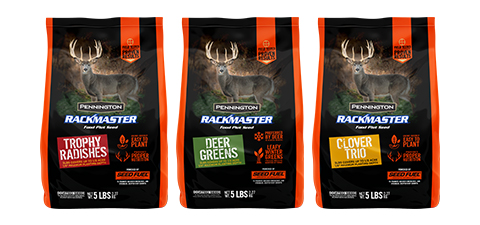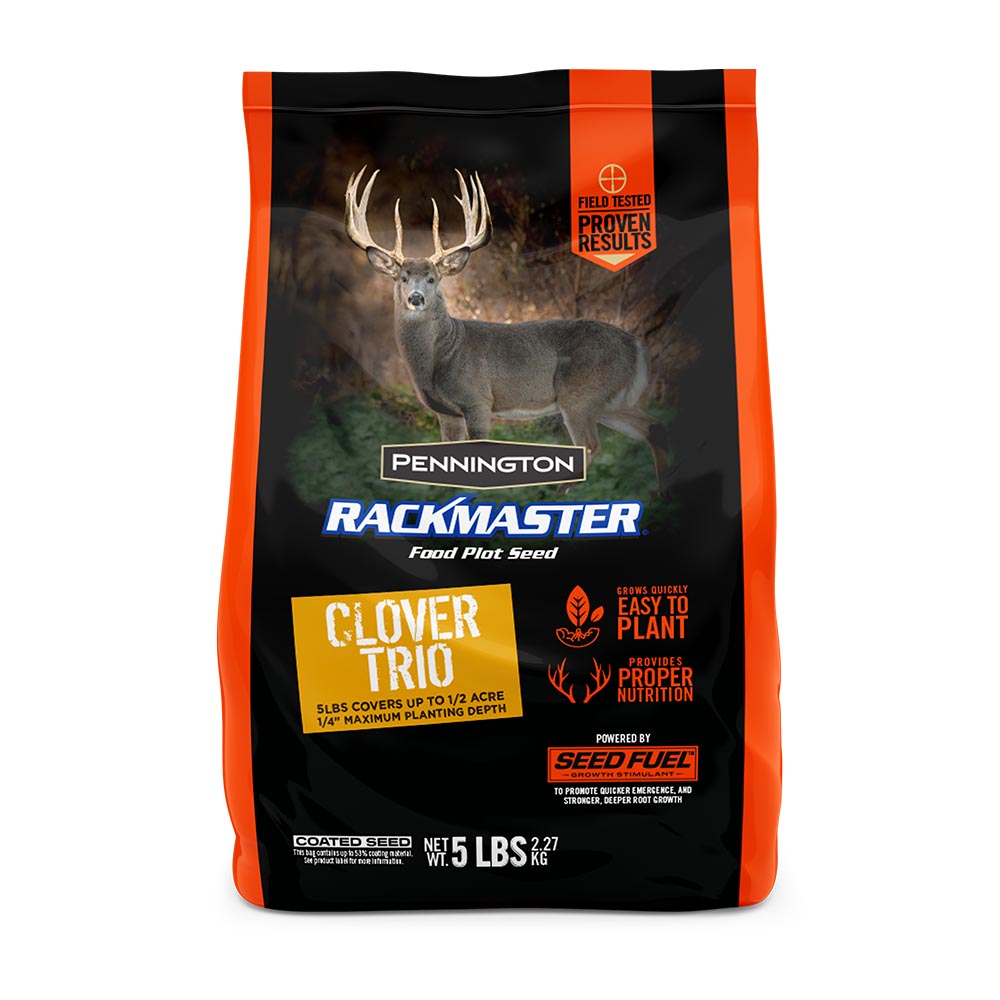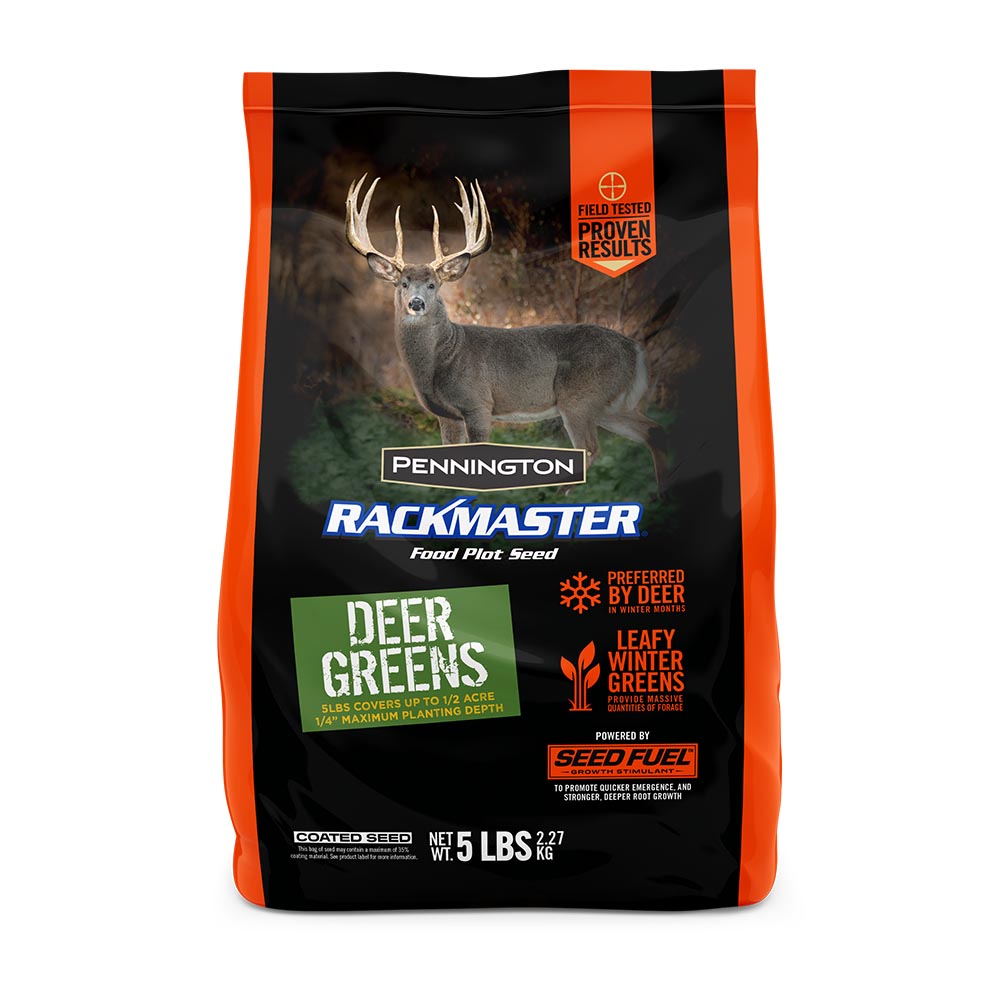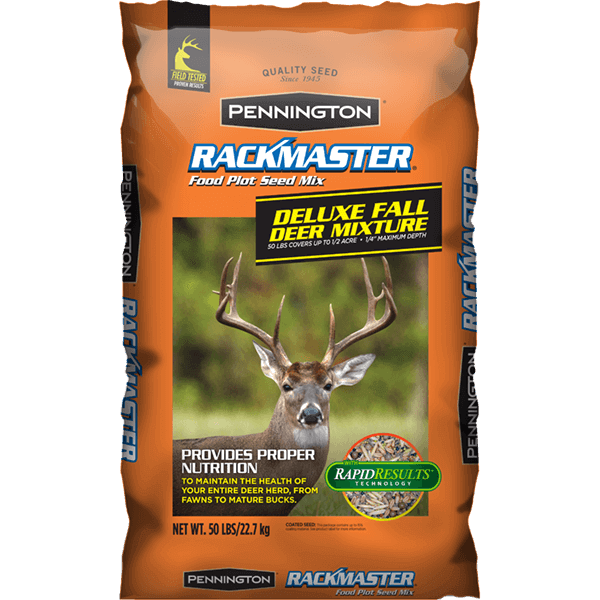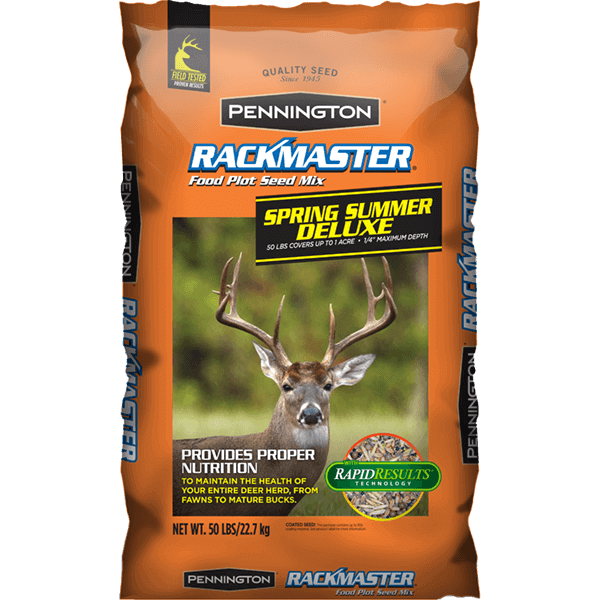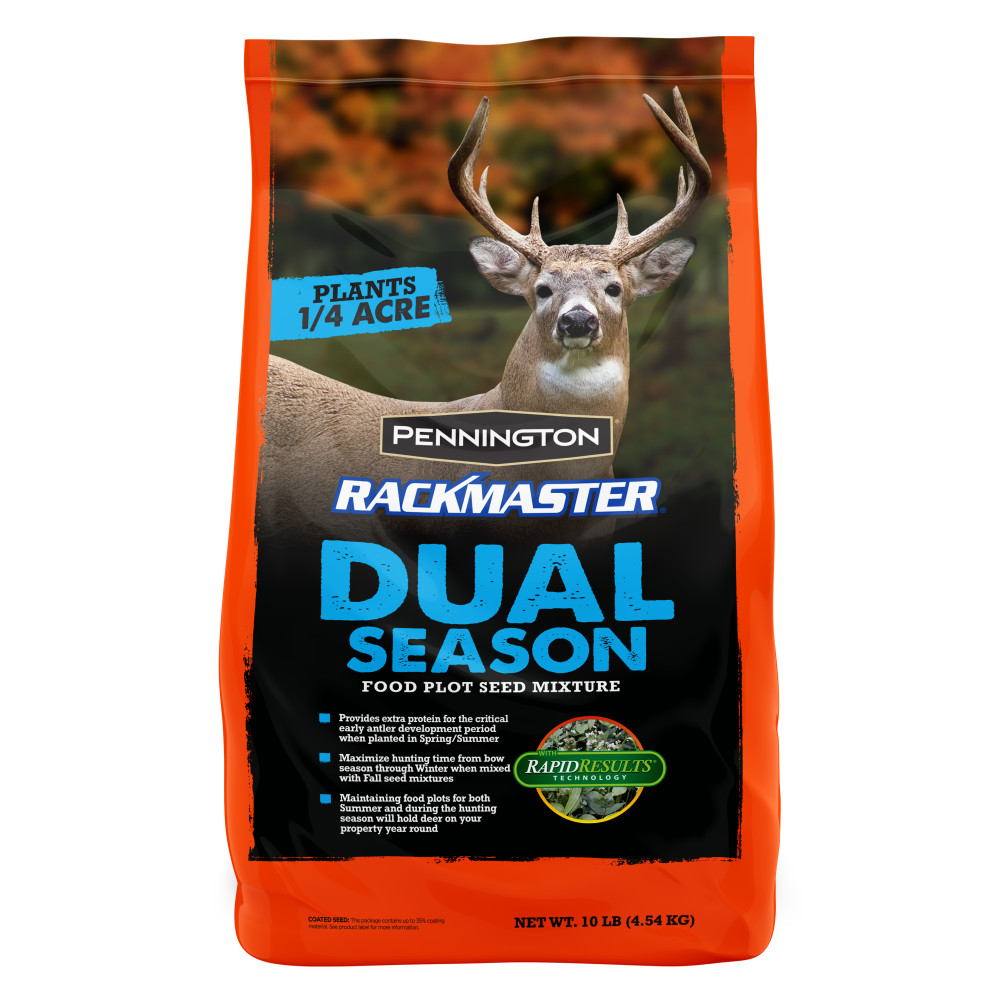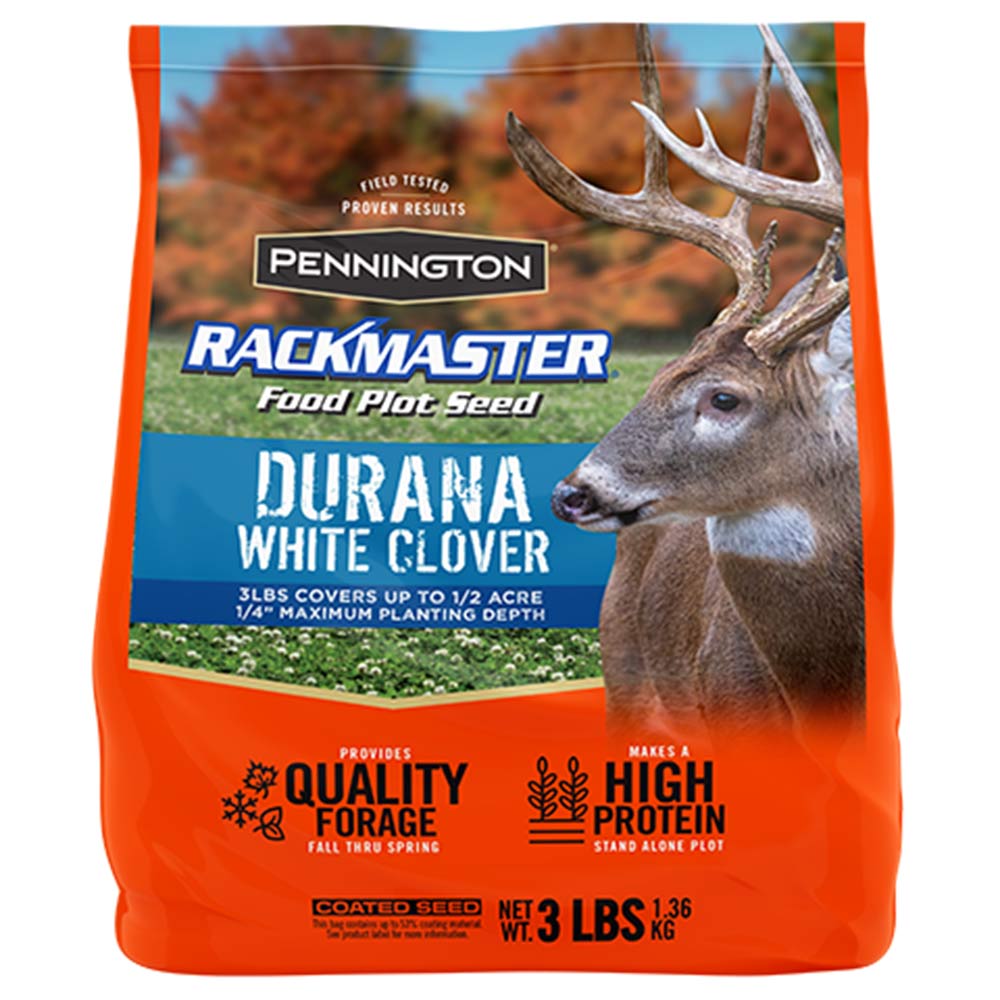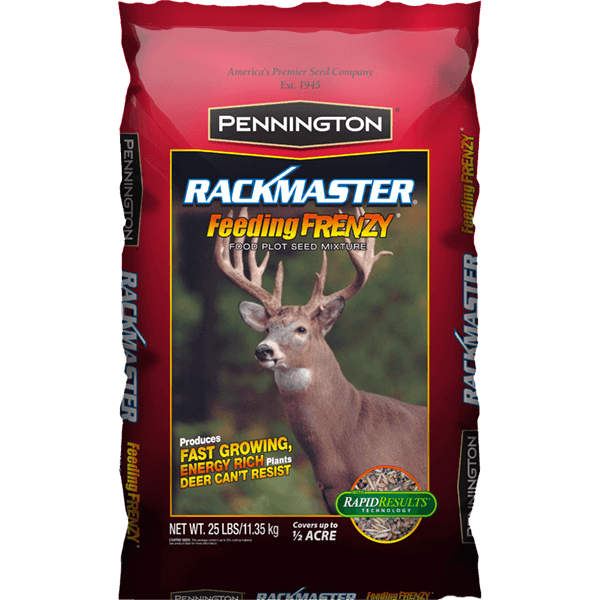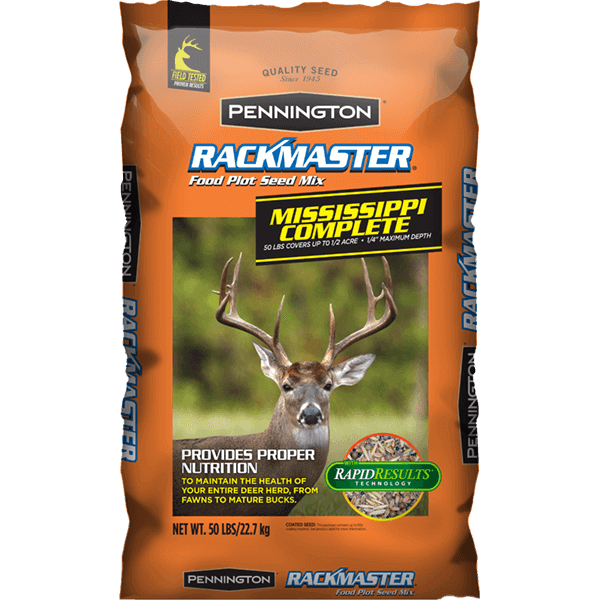Pennington Rackmaster
Pennington Seed is proud to offer seed to improve your wildlife habitat. Our varieties and various mixes have been field tested for many years and are the finest products on the market today.-
Rackmaster Clover Trio
RACKMASTER Clover Trio mix is a blend of Annual and Perennial clovers with staggered maturity dates that provides abundant amounts of protein and energy rich forage for deer, turkey and other wildlife for up to 10 months Annually.
-
Rackmaster Deer Greens
RACKMASTER Deer Greens is a combination of brassicas including rape, purple top turnip, kale and Trophy Radish that provides abundant and nutritious forage for deer during the fall and winter months. It can also be planted in late winter/early spring.
-
Rackmaster Deluxe Fall Deer Mix
RACKMASTER Fall Deluxe Mixture is a combination of winter Annual grasses, legumes and brassica that attract deer and provide the nutrients needed by the deer herd to maintain good body condition throughout the rut and winter stress period. It also furnishes excellent browsing habitat for quail and turkey. A hunter favorite.
-
Rackmaster Deluxe Spring/Summer Mix
RACKMASTER Deluxe Spring/Summer Mixture is a blend of soybeans, iron clay cowpeas, buckwheat, sunflower and sorghum that furnishes deer with the nutrients needed for antler and body growth, milk production for does nursing fawns and overall health of the deer herd. It also provides food and cover for turkey, dove and quail.
-
Rackmaster Dual Season
Pennington Rackmaster Dual Season is a mix of warm season grains and legumes which together make a great spring/summer food plot that will carry over into the early fall bow season.
-
Rackmaster Durana White Clover
Durana is the premier white clover on the market for whitetail deer management. It is a Perennial legume that withstands heavy grazing pressure, tolerates acid soils and competes aggressively with weeds and grasses as commonly seen in food plot situations. It is nutrient dense with protein levels of 25% or more. With favorable weather and proper management, Durana can persist 3-5 years or longer. Its persistence, productivity and high preference by deer, turkey and other wildlife species make it a hunter favorite. Available in a 3 lb. bag.
-
Rackmaster Feeding Frenzy
RACKMASTER Feeding Frenzy is a mixture of winter Annual small grains, brassica, winter peas and re-seeding high protein clovers that deer can't resist.
-
Rackmaster Mississippi Complete Mix
Developed in cooperation with the Mississippi Department of Wildlife, Fisheries and Parks, RACKMASTER Mississippi Complete seed blend contains a highly preferred mixture of small grains and Annual legumes that attract and hold deer from fall through late spring /early summer. It also provides excellent food, cover and habitat for browsing quail and turkey.


